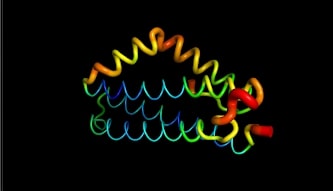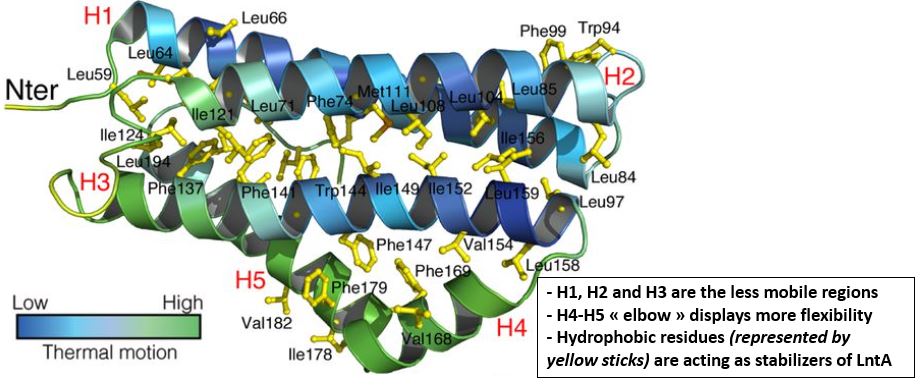Sandbox Reserved 1659
From Proteopedia
(Difference between revisions)
| Line 31: | Line 31: | ||
The discovery of the LntA virulence factor shows that pathogenic bacteria can implement complex infectious strategies, requiring very precise temporal and quantitative regulation of the virulence factor delivery. Studies on virulence factors that target the nucleus can lead to the discovery of new mechanisms of gene expression regulation. And more importantly, the understanding these dialogs might allow new drug design and possibly a better support of the patients. Furthermore, the awareness of such mechanisms is very recent and raises many questions. For instance, it is still unclear whether the impact of lntA on gene expression is merely temporary or whether it leaves epigenetic marks over the long term. | The discovery of the LntA virulence factor shows that pathogenic bacteria can implement complex infectious strategies, requiring very precise temporal and quantitative regulation of the virulence factor delivery. Studies on virulence factors that target the nucleus can lead to the discovery of new mechanisms of gene expression regulation. And more importantly, the understanding these dialogs might allow new drug design and possibly a better support of the patients. Furthermore, the awareness of such mechanisms is very recent and raises many questions. For instance, it is still unclear whether the impact of lntA on gene expression is merely temporary or whether it leaves epigenetic marks over the long term. | ||
| - | Key points about LntA: - Is a virulence factor of L. monocytogenes | + | Key points about LntA: '''Function:''' |
| + | - Is a virulence factor of L. monocytogenes | ||
- Interacts with BAHD1, a transcription factor, in the nucleus | - Interacts with BAHD1, a transcription factor, in the nucleus | ||
- Remove the chromatin repressors from the host's DNA | - Remove the chromatin repressors from the host's DNA | ||
- Triggers the formation of interferons | - Triggers the formation of interferons | ||
| + | |||
| + | '''Structure:''' | ||
| + | -A 9.7 kDa protein | ||
| + | -Made up of five alpha-helixes | ||
| + | -H4 and H5 responsible of the interaction with BAHD1 | ||
Revision as of 13:02, 20 January 2022
| |||||||||||
References
- ↑ ROHDE JOHN R. Listeria unwinds host’s DNA. SCIENCE, 2011 : 1271-1272
- ↑ Winter SE, Thiennimitr P et al. Gut inflammation provides a respiratory electron acceptor for Salmonella. Nature. 2010
- ↑ Dewoody, R., Merritt, P.M., Houppert, A.S. and Marketon, M.M. (2011), YopK regulates the Yersinia pestis type III secretion system from within host cells. Molecular Microbiology, 79: 1445-1461. https://doi.org/10.1111/j.1365-2958.2011.07534.x
- ↑ Lebreton A, Job V, Ragon M, Le Monnier A, Dessen A, Cossart P, Bierne H. 2014. Structural basis for the inhibition of the chromatin repressor BAHD1 by the bacterial nucleomodulin LntA
- ↑ Alice Lebreton. Régulations post-transcriptionnelles de l’expression génique de la cellule hôte en réponse à l’infection bactérienne. Sciences du Vivant, 2015


